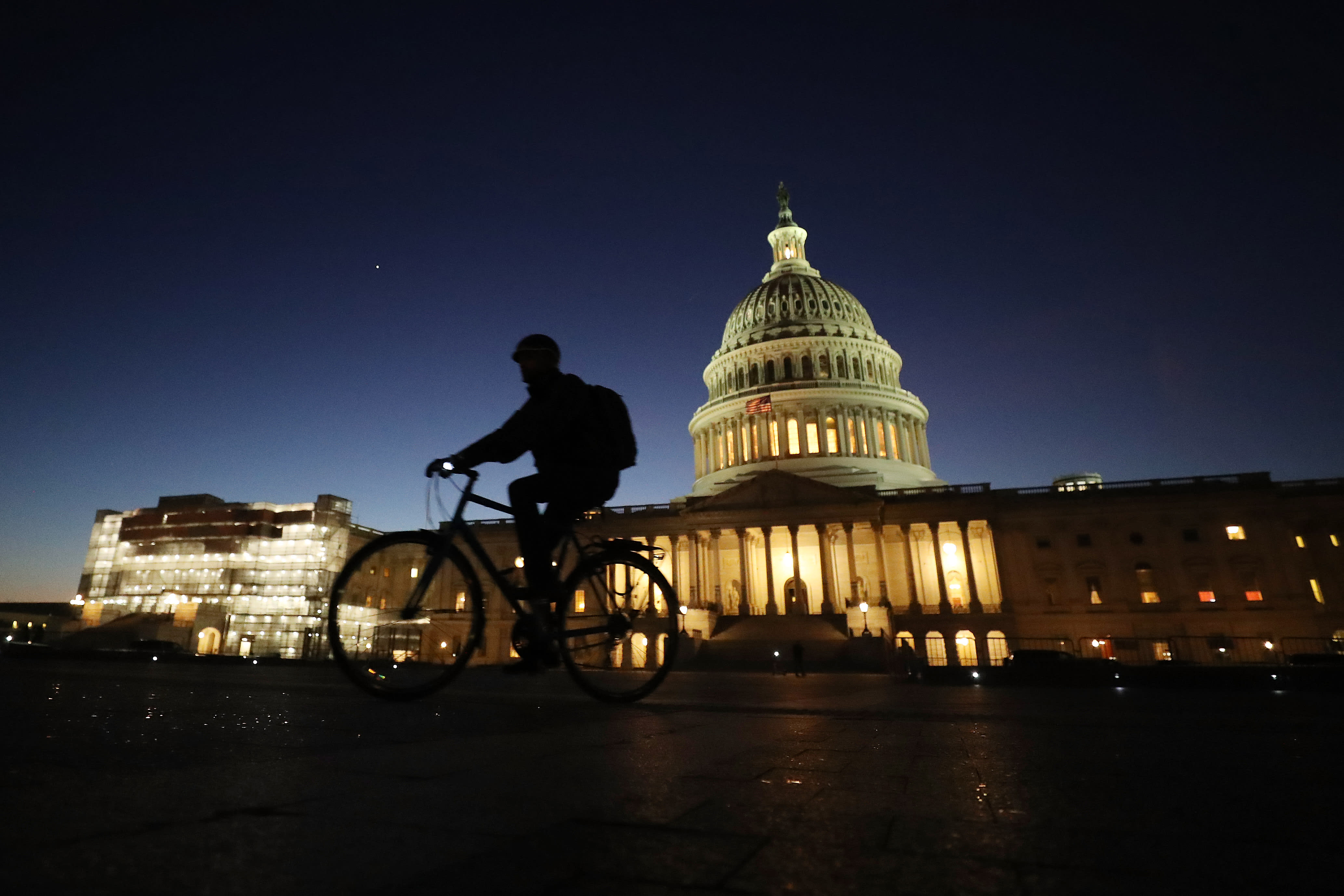
Futures contracts tied to the major U.S. stock indexes surged in early trading Tuesday on hopes an agreement on a stimulus bill to rescue the economy from the coronavirus was close.
As of 6:24 a.m ET., Dow Jones Industrial Average futures jumped 930 points, or 5%, to hit so-called limit up levels. S&P 500 futures and Nasdaq futures were also up 5% and “limit up.” The S&P 500 SPDR ETF was up 5.1% in premarket trading.
Senator Charles Schumer and Treasury Secretary Mnuchin were close to a deal on a $2 trillion stimulus bill, according to reports, which cited a conference call Schumer had Monday evening with Democratic leaders. Negotiations on the bill were set to continue Tuesday morning.
The futures contracts cannot trade once they exceed certain extreme bands, according to rules of the exchange to curb volatility. No activity can take place outside of those bands, in this case, up 5%. During this historic market plunge this month, the futures have often been halted for being “limit down,” off by more than 5%
The overnight moves followed yet another stormy day on Wall Street on Wednesday as investors swung back to pessimism and pushed the major indexes to new multiyear lows as a procedural vote in the Senate on a bill failed for the second time in 24 hours.
The Dow dropped 582.05 points, or 3%, to a new three-year low on Monday and remained on pace to clinch its worst calendar month since 1931. The S&P 500 dropped 2.9% to 2,237 and closed 34% below a record set last month as both indexes sank further into bear markets amid the COVID-19 outbreak.
Stocks hardest hit by the shutdowns resulting from the coronavirus led the gains in premarket trading Tuesday. Shares of Wynn and MGM Resorts were up more than 11%. Airlines like Delta jumped more than 10%.
Democrats have criticized the $500 billion fund that the Republican proposal sets aside for distressed businesses, calling it a bailout fund “with no strings attached.”
“I think the limit of time as to how long these negotiations will go on, will be set by the initial unemployment claims that come out on Thursday,” Steven Ricchiuto, chief U.S. economist at Mizuho Securities, told CNBC’s “Squawk Box Asia” on Tuesday morning Singapore time.
“I don’t think there’s any representative in the House or … in the Senate who’s gonna be willing to sit back and debate a lot of issues … and political talking points when you have what could be essentially as many as 3 million people filing for unemployment insurance,” Ricchuito said.
The futures’ gains also came as President Donald Trump signaled he was eager to reopen the economy, despite concerns of public health officials.
“At some point we’re going to open up our country, and it will be fairly soon,” Trump said during an evening press briefing on the fast-spreading virus.
Markets are getting support from the Federal Reserve, which said Monday it would embark on an open-ended asset purchase program. The central bank said the program will run in the “amounts needed to support smooth market functioning and effective transmission of monetary policy to broader financial conditions and the economy.”
“This market has been utterly dangerous since February,” wrote Fundstrat’s Tom Lee in a note Tuesday. “But there are glimmers of hope.”
The spread of the coronavirus also forced the New York Stock Exchange to conduct its first day of fully electronic trading. The exchange said last week that two people tested positive for the disease at screenings it conducted this week.
—CNBC’s Eustance Huang contributed to this report.
Subscribe to CNBC PRO for exclusive insights and analysis, and live business day programming from around the world.

